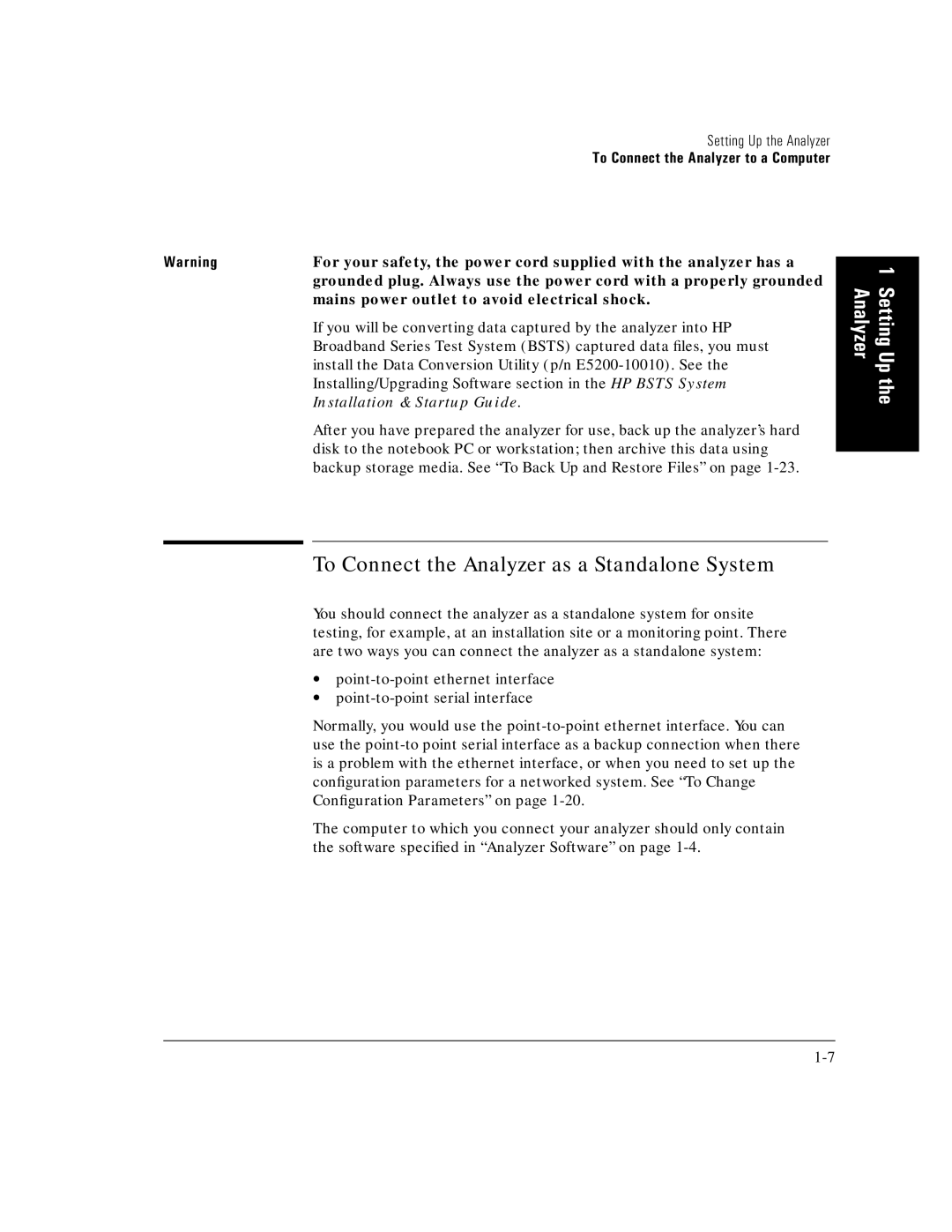
Setting Up the Analyzer
To Connect the Analyzer to a Computer
Warning | For your safety, the power cord supplied with the analyzer has a |
| grounded plug. Always use the power cord with a properly grounded |
| mains power outlet to avoid electrical shock. |
| If you will be converting data captured by the analyzer into HP |
| Broadband Series Test System (BSTS) captured data files, you must |
| install the Data Conversion Utility (p/n |
| Installing/Upgrading Software section in the HP BSTS System |
| Installation & Startup Guide. |
| After you have prepared the analyzer for use, back up the analyzer’s hard |
| disk to the notebook PC or workstation; then archive this data using |
| backup storage media. See “To Back Up and Restore Files” on page |
To Connect the Analyzer as a Standalone System
You should connect the analyzer as a standalone system for onsite testing, for example, at an installation site or a monitoring point. There are two ways you can connect the analyzer as a standalone system:
∙
∙
Normally, you would use the
The computer to which you connect your analyzer should only contain the software specified in “Analyzer Software” on page
1 Setting Up the Analyzer
